
Starting in the early hours of Saturday, April 2, the latest clashes that took place in Nagorno-Karabakh continued until a ceasefire agreement was signed in Moscow on Tuesday, April 5 between the Chiefs of Staffs of Azerbaijan and Armenia.[1] This one of the most important events to take place since the 1994 ceasefire and is already being referred to as the “Four Day War”. Although many ceasefire violations and minor clashes have occurred, the recent fighting, due to its size and outcomes, is unique and much more significant than the previous ones.
The “Four Day War” was not only fought in the front line. From the moment the conflict began, a great propaganda war was held in the press and on the social media. Indeed, students of the American university of Armenia in Yerevan organized the translation in different languages of statements of Armenian officials and spread them through social media channels. As bad news came from the front, one could see the emergence of a mobilization (levy en masse) in Armenia. According to some reports, Armenian veterans of the 1988-1994 Nagorno Karabakh War, organized with their own initiative moved toward the front. Some sources reported that Azerbaijan hit vehicles carrying Armenian volunteers with Israeli-made weapons called “Kamikaze UAV”, causing them great losses.
During the "Four Day War", especially in the early stages, the Armenian media and social media stated that 50-60 Azerbaijani ISIS militants moved toward the region in order to join the Azerbaijani army. These allegations are an important observation in the context of the propaganda war. Apparently, the Armenian side has adopted a way to instrumentalized ISIS for its own propaganda, using its reputation in the world’s agenda to its advantage. This can be understood as a kind of propaganda in wartime conditions which has the potential to have negative consequences in the long term. The Armenian side did not consider this possibility in any way. Another factor pointed out by the Armenian side propaganda is the discourse centred on Azerbaijani President Ilham Aliyev. Armenian media and social media, draw attention to human rights violations in Azerbaijan, which is criticized by the West, showing Aliyev as a corrupt despot, in an attempt to find support from the West. By doing so, firstly they have stated that Azerbaijan was the first one to attack Armenia, in order to channel the growing social opposition due to economic stagnation and political repression to another wider enemy. To substantiate this claim, recently exposed information documents concerning Aliyev in the “Panama papers” were brought to the fore. However, the Armenian side by acting so, has forgotten that the conflict had begun in the early hours of April 2 and that the “Panama Papers” fell into the world agenda on the April 3.
It can be stated that the military and political winner of the “4-Days War” is Azerbaijan. We do not have clear information about the casualties of the sides in the conflict. Both sides, has made numerous propaganda activities on the casualties of the opposite side. In addition, when evaluating the claims expressed in various sources, it is understood that Azerbaijan lost 12-16 soldiers, a helicopter, a tank, and two drones. According to some news coming out Azerbaijan also has missing soldiers. The Armenian Ministry of Defence announced that on April 13, the Armenian side lost 87 soldiers and militia. 1 officer is missing. In addition, 4 civilians were killed during the conflict[2]. It is also understood that The Armenian side lost tanks and artilleries.
It is noted that Azerbaijan, as a result of this confrontation, has reclaimed control of three strategic points in the North and South of Nagorno-Karabakh, translating into military advantages for the Azerbaijani side. Aside from military and strategic gains, the changes in favour of Azerbaijan in the frontline also have psychological implications. In this sense, the fact that Azerbaijan regained control of certain areas in the “Four Day War” has boosted the morale of Azerbaijani soldiers and in return demoralised the Armenian armed forces. In parallel to this, the Armenian press and social media has either not mentioned anything in relation to Azerbaijani gains or trivialised their extent.
With regards to the political consequences of the “For Day War”, firstly, the recent fighting, along with the developments taking place in North Africa, the Middle East and the wider Caucasus region has once again brought the “frozen conflict” to the attention of the international community. The enduring status-quo and the fact that the Nagorno-Karabakh conflict remained mostly forgotten was a situation most favoured by Armenians. The “Four Day War” put an end to this. This is a significant gain for Azerbaijan.
At present, the Minsk Group, under the auspices of the OSCE, co-chaired by France, the Russian Federation, and the United States, is leading the efforts to find a solution to the ongoing Nagorno-Karabakh conflict. This group has not only failed to come anywhere close to a peaceful solution, but has instead served to maintain the current status-quo. Moreover, the geopolitical interests and pre-existing biases of the Russian Federation and France, which are amongst the co-chairs of the Minsk Group, complicate matters further by becoming a part of the problem rather than the solution.
The remarks made by the President of the Parliamentary Assembly of the Council of Europe (PACE), Pedro Agramunt, on April 3, calling the Armenian armed troops to withdraw from the occupied territories of Azerbaijan and to comply with the UN Security Council resolutions have great significance[3]. Agramunt’s statement is imperative as it describes the current situation in Nagorno-Karabakh as an ‘occupation’ by referring to the UNSC Resolutions. This assessment of the situation, also espoused by the Azerbaijani side, invalidates the “self-determination” argument put forth by Armenians. Similarly, Agramunt’s statement is important for the Azerbaijani side as it encourages the discussion of the Nagorno-Karabakh conflict within the framework of international law and international documents rather than based on propaganda, as certain Armenian media outlets most successfully do. Moreover, the fact that this statement was made by the President of an institution that has weight in international affairs is significant on its own and also signifies the growing concerns over the competence of the Minsk Group in finding a peaceful solution to this conflict. Likewise, the argument favouring the involvement of the European Union in the resolution of the Nagorno-Karabakh conflict, as voiced by various experts, has taken further root.
In addition, it is essential to scrutinize the stances of Belarus and Kazakhstan during and right after the “Four Day War”. On April 2, whilst the fighting continued, the Ministry of Foreign Affairs of Belarus published a statement on its website calling for a resolution of the Nagorno-Karabakh conflict in line with international law, the principles of sovereignty and territorial integrity, and the UNSC Resolutions and OSCE decision[4]. In this regard, Belarus, similar to PACE, stresses Azerbaijan’s right to territorial integrity. Following this statement, the Armenian Ministry of Foreign Affairs summoned the Ambassador of Belarus in Erivan to a meeting to express their views on this statement[5].
On April 6, one day after the ceasefire was signed, Kazakhstan, a member of the Eurasia Economic Union, requested that the EEU meeting be held in Moscow, which had previously been scheduled to take place in Erivan on April 8[6]. Despite Armenian opposition, it was decided that the meeting would take place on April 13 in Moscow[7]. This is clearly an indication of Kazakhstan’s support to Azerbaijan.
Both Belarus and Kazakhstan are members of the EEU and the Collective Security Treaty Organization (CSTO) to which Armenia is also a part of. Belarus is also a member of the OSCE Minsk Group. In this regard, the stances of these two countries within the above organizations, to which Armenia joined in the face of its security threats, have caused great disappointments and insecurity for Armenia.
In addition to these, it would not be wrong to argue that the most significant development for Armenia was the statements made by Russia. Armenians perceive Russia as a ‘big brother’. The Armenian government and the pro-Russian elite in Armenia responded to the discontent towards the Russian hegemony in Armenia with the argument that Russia is guarantees security. Russia has failed to display any sign of support to Armenia neither during the “Four Day War” nor after it. On the contrary, Russia, with its statements and attitude, has maintained a neutral position between Armenia and Azerbaijan.
The Russian Minister of Foreign Affairs, Lavrov, flied to Baku on April 6, for the occasion of the trilateral meeting between Azerbaijan, Iran and Russia scheduled for April 7[8]. Russian Prime Minister, Medvedev, who was in Erivan on April 7, flied to Baku the following day. Although, Lavrov’s visit to Baku was planned beforehand, it is understood that Medvedev’s visit was a ‘last-minute’ development. This, of course, implies much more in diplomacy, signalling a message to both sides.
Moreover, on April 7, Lavrov, in an interview, referred to Azerbaijan as a strategic partner[9]. Despite opposition from the Armenian side, Russian authorities stated that Russia would continue to sell arms both to Armenia and Azerbaijan[10].
To sum up, it is unfortunate that the latest fighting in Nagorno-Karabakh lasted long enough to result in a large number of casualties on both the Armenian and Azerbaijani side. It is apparent that steps must be taken to understand the reasons behind the deadlock and the outbreak of violence and more importantly to find a peaceful solution to the ongoing conflict in Nagorno-Karabakh. The continued indifference displayed by the international community and the inefficacy of the OSCE Minsk Group in reaching a solution will only give rise to clashes similar to the “Four Day War”. It is understood that Azerbaijan has come out victorious in the latest confrontation. Azerbaijan, through this short-lived war, has conveyed a strong message not only to Armenia but also to the international community.
[1] This is the English version of the commentary published on AVİM website on 14.04.2016 with the title Karabağ’da Yaşanan “4 Gün Savaşi”nin Kısa Bir Değerlendirmesi. The text was translated from Turkish to English by İdil Aşar and Osman Gün.
[3] http://assembly.coe.int/nw/xml/News/News-View-EN.asp?newsid=6094&lang=2&cat=15
[4] http://mfa.gov.by/en/press/news_mfa/ed083eeb7910baf9.html
[5] http://www.mfa.am/en/press-releases/item/2016/04/03/koch_bel_amb/
[6] http://armenianow.com/news/71321/armenia_eeu_summit_yerevan_kazakhstan_karabakh_tensions
[7] http://tass.ru/en/economy/868178
[8] http://tass.ru/en/politics/867810
[9] http://www.embrussia.ru/node/660
[10] http://www.irishtimes.com/news/world/europe/deadly-fire-continues-amid-russian-led-talks-on-nagorno-karabakh-1.2603951
© 2009-2025 Center for Eurasian Studies (AVİM) All Rights Reserved
No comments yet.
-
 LESSONS TO BE LEARNED FROM THE 10 NOVEMBER EVENTS IN CALIFORNIA
LESSONS TO BE LEARNED FROM THE 10 NOVEMBER EVENTS IN CALIFORNIA
Turgut Kerem TUNCEL 15.11.2016 -
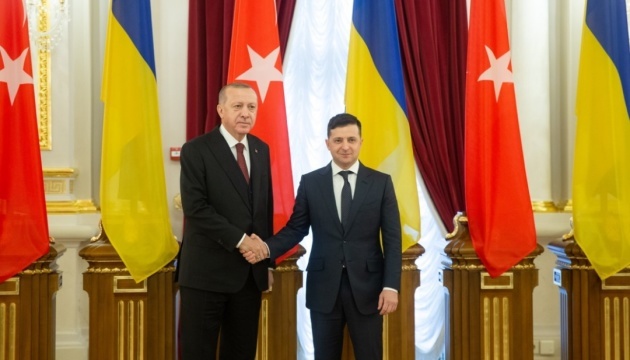 THE ‘ARMENIAN QUESTION’ IN UKRAINE - I: A POTENTIAL PROBLEM IN A PROMISING RELATIONSHIP BETWEEN TURKEY AND UKRAINE
THE ‘ARMENIAN QUESTION’ IN UKRAINE - I: A POTENTIAL PROBLEM IN A PROMISING RELATIONSHIP BETWEEN TURKEY AND UKRAINE
Turgut Kerem TUNCEL 07.05.2021 -
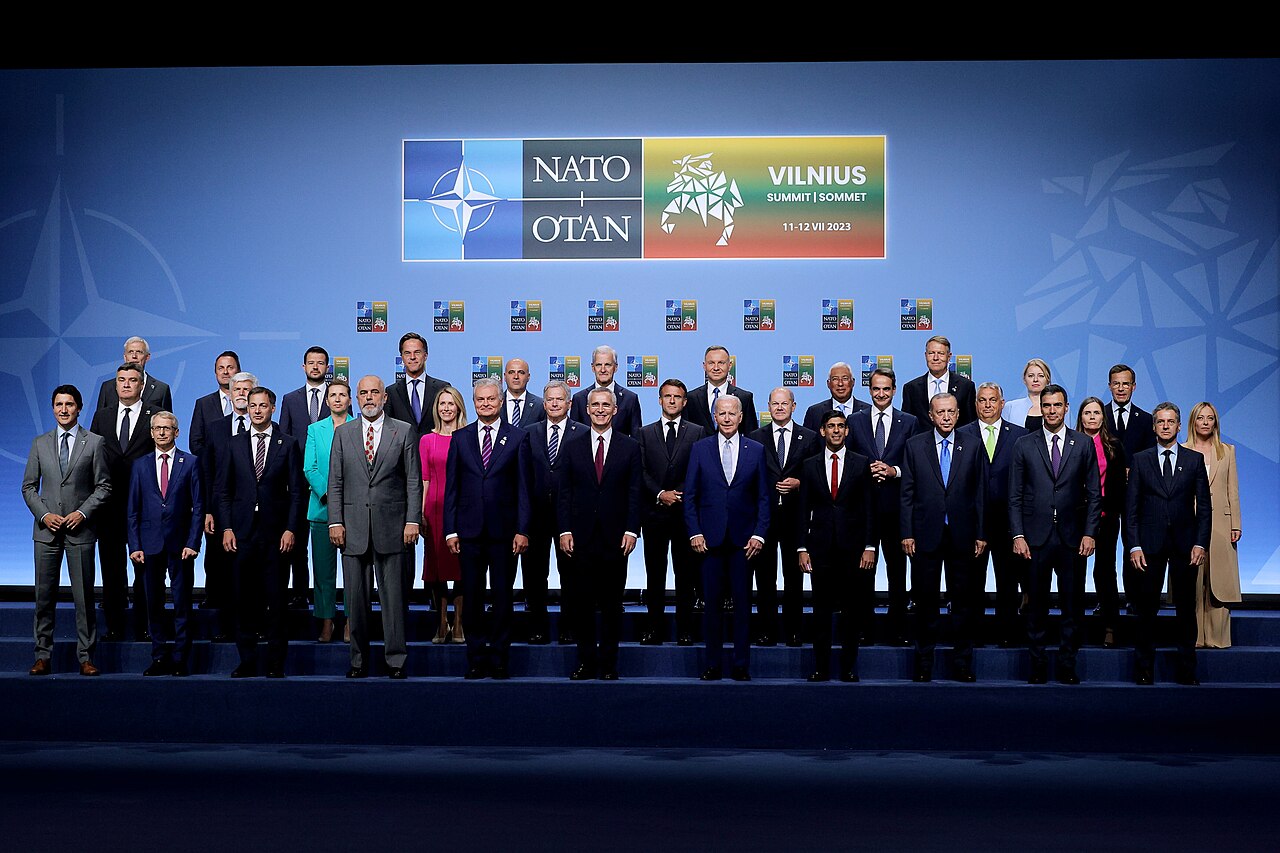 THE 2023 NATO SUMMIT AND THE BLACK SEA SECURITY
THE 2023 NATO SUMMIT AND THE BLACK SEA SECURITY
Turgut Kerem TUNCEL 20.07.2023 -
 ARMENIA FROM BEING A RUSSIAN SATELLITE TO BEING A WESTERN BASTION?
ARMENIA FROM BEING A RUSSIAN SATELLITE TO BEING A WESTERN BASTION?
Turgut Kerem TUNCEL 23.11.2023 -
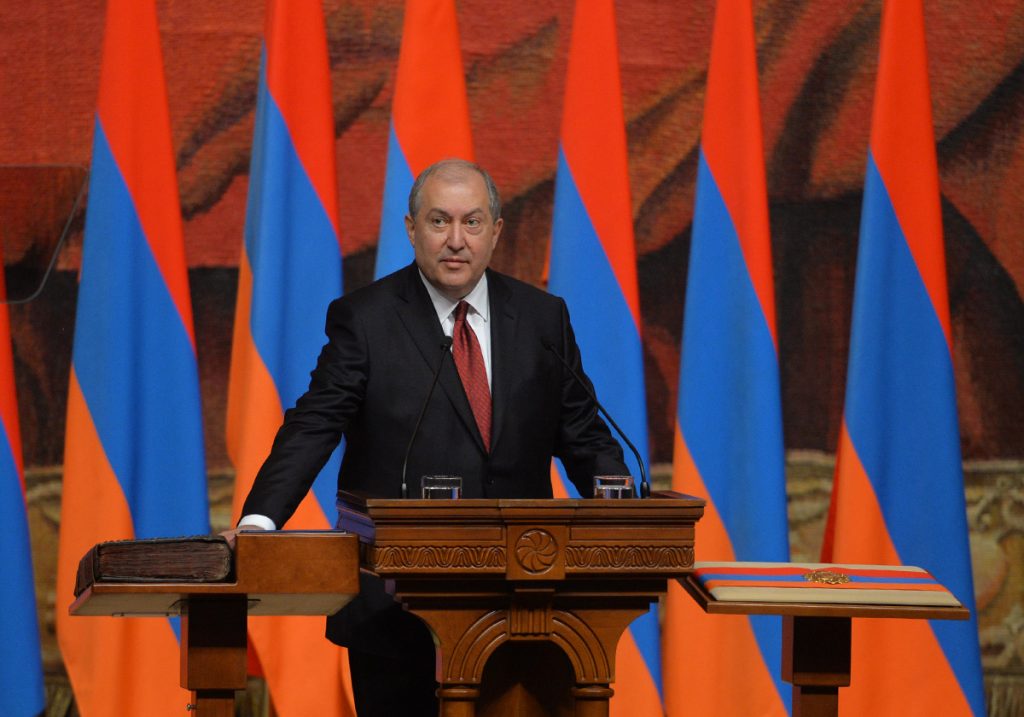 THE INAUGURATION SPEECH OF THE NEWLY ELECTED ARMENIAN PRESIDENT ARMEN SARKISSIAN: MORE OF THE SAME IDEOLOGICAL OUTLOOK
THE INAUGURATION SPEECH OF THE NEWLY ELECTED ARMENIAN PRESIDENT ARMEN SARKISSIAN: MORE OF THE SAME IDEOLOGICAL OUTLOOK
Turgut Kerem TUNCEL 17.04.2018
-
 GREEK INDEPENDENCE DAY AND THE PREVAILING DOUBLE STANDARD OF THE WEST
GREEK INDEPENDENCE DAY AND THE PREVAILING DOUBLE STANDARD OF THE WEST
AVİM 16.04.2025 -
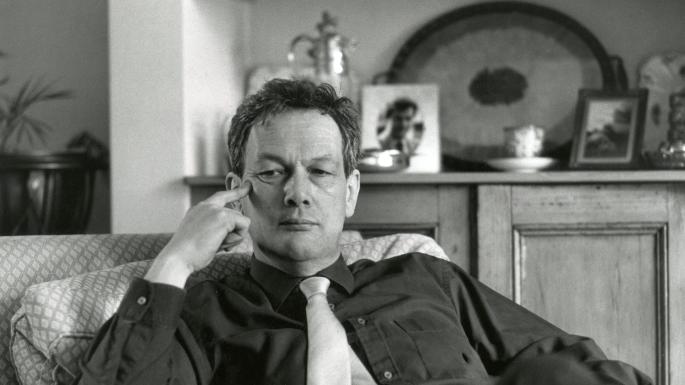 BIASED DISPARAGEMENT OF THE LATE NORMAN STONE BY TWO BRITISH DAILIES
BIASED DISPARAGEMENT OF THE LATE NORMAN STONE BY TWO BRITISH DAILIES
AVİM 16.07.2019 -
 URGENT NEED TO STRENGTHEN THE EFFECTIVE IMPLEMENTATION OF THE BIOLOGICAL WEAPONS CONVENTION
URGENT NEED TO STRENGTHEN THE EFFECTIVE IMPLEMENTATION OF THE BIOLOGICAL WEAPONS CONVENTION
Teoman Ertuğrul TULUN 16.04.2020 -
THE COURT RULING IN ARGENTINA
Ömer Engin LÜTEM 04.04.2011 -
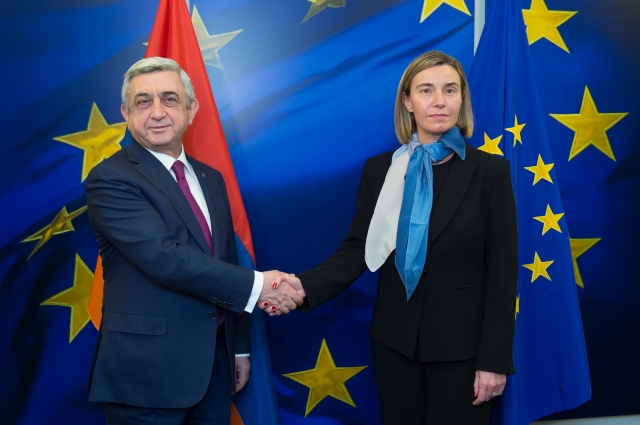 A NEW PAGE FOR ARMENIA-EU RELATIONS?
A NEW PAGE FOR ARMENIA-EU RELATIONS?
Özge Nur ÖĞÜTCÜ 06.04.2017
-
25.01.2016
THE ARMENIAN QUESTION - BASIC KNOWLEDGE AND DOCUMENTATION -
12.06.2024
THE TRUTH WILL OUT -
27.03.2023
RADİKAL ERMENİ UNSURLARCA GERÇEKLEŞTİRİLEN MEZALİMLER VE VANDALİZM -
17.03.2023
PATRIOTISM PERVERTED -
23.02.2023
MEN ARE LIKE THAT -
03.02.2023
BAKÜ-TİFLİS-CEYHAN BORU HATTININ YAŞANAN TARİHİ -
16.12.2022
INTERNATIONAL SCHOLARS ON THE EVENTS OF 1915 -
07.12.2022
FAKE PHOTOS AND THE ARMENIAN PROPAGANDA -
07.12.2022
ERMENİ PROPAGANDASI VE SAHTE RESİMLER -
01.01.2022
A Letter From Japan - Strategically Mum: The Silence of the Armenians -
01.01.2022
Japonya'dan Bir Mektup - Stratejik Suskunluk: Ermenilerin Sessizliği -
03.06.2020
Anastas Mikoyan: Confessions of an Armenian Bolshevik -
08.04.2020
Sovyet Sonrası Ukrayna’da Devlet, Toplum ve Siyaset - Değişen Dinamikler, Dönüşen Kimlikler -
12.06.2018
Ermeni Sorunuyla İlgili İngiliz Belgeleri (1912-1923) - British Documents on Armenian Question (1912-1923) -
02.12.2016
Turkish-Russian Academics: A Historical Study on the Caucasus -
01.07.2016
Gürcistan'daki Müslüman Topluluklar: Azınlık Hakları, Kimlik, Siyaset -
10.03.2016
Armenian Diaspora: Diaspora, State and the Imagination of the Republic of Armenia -
24.01.2016
ERMENİ SORUNU - TEMEL BİLGİ VE BELGELER (2. BASKI)
-
AVİM Conference Hall 24.01.2023
CONFERENCE TITLED “HUNGARY’S PERSPECTIVES ON THE TURKIC WORLD"









